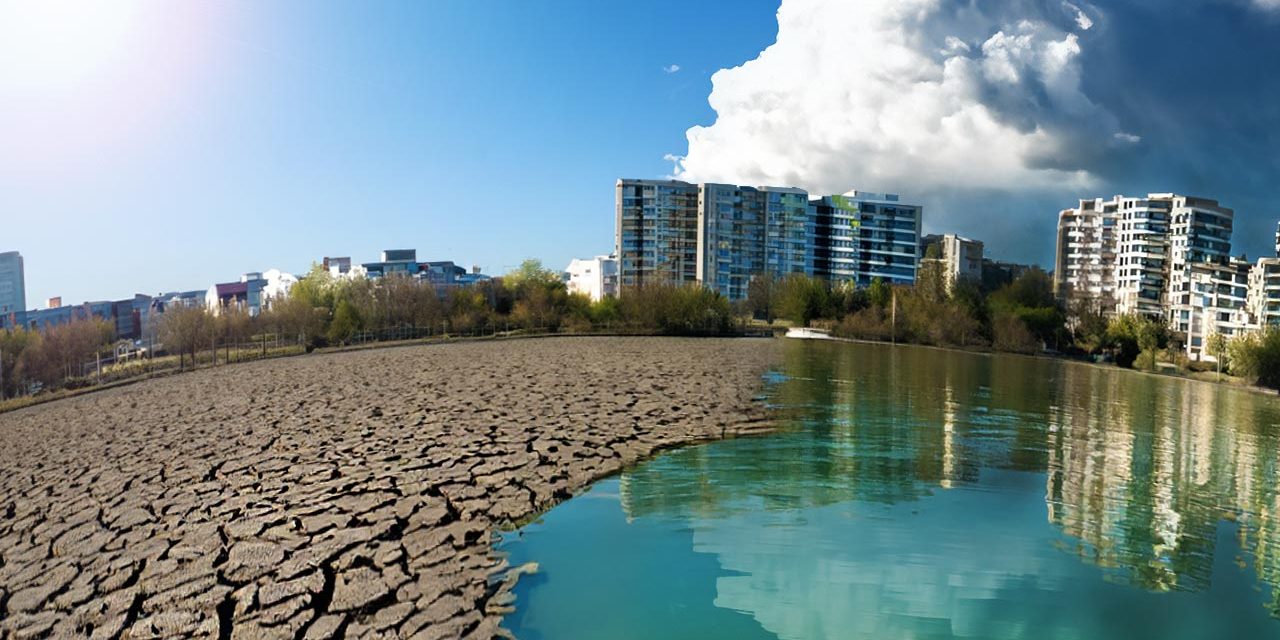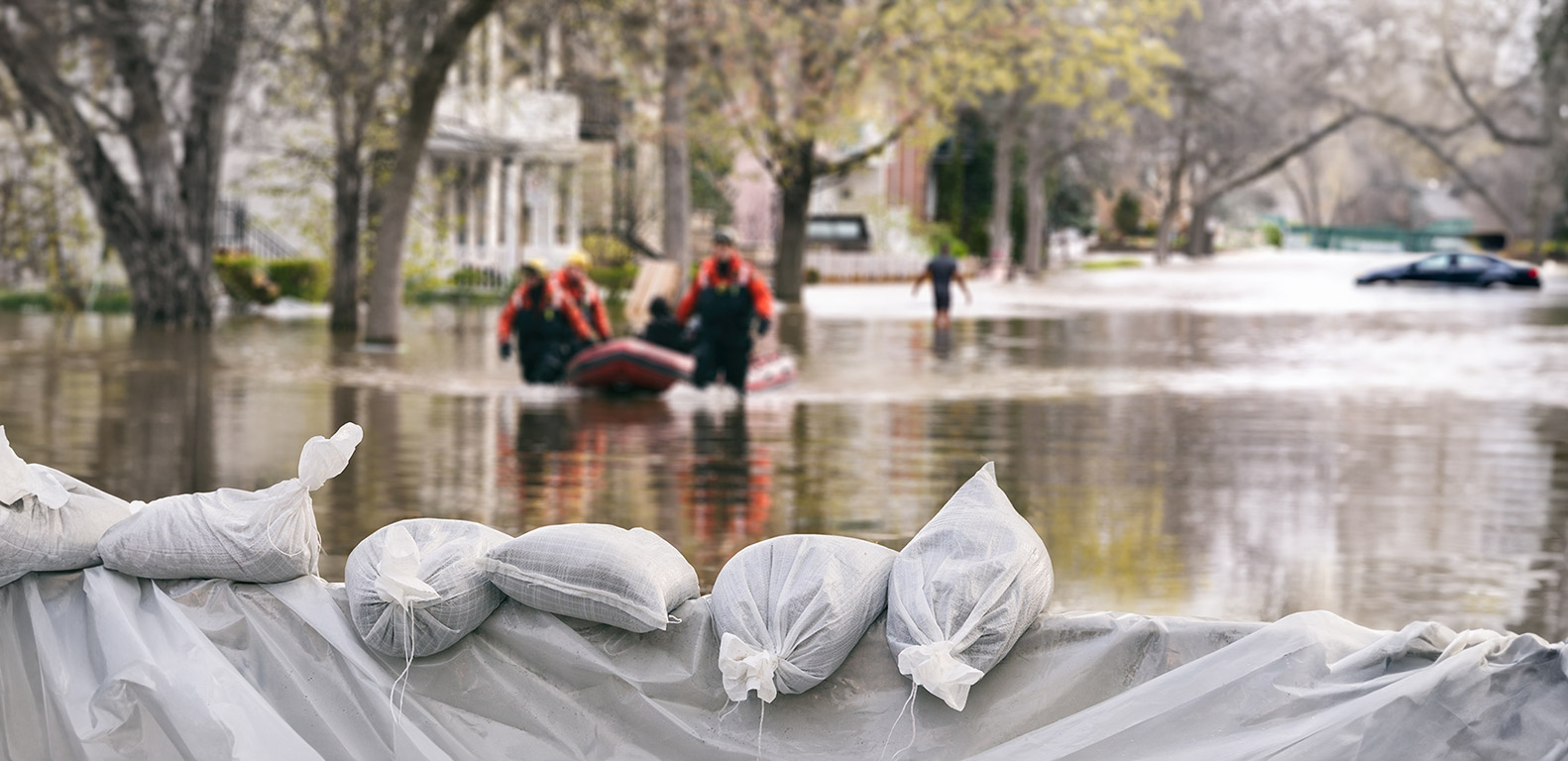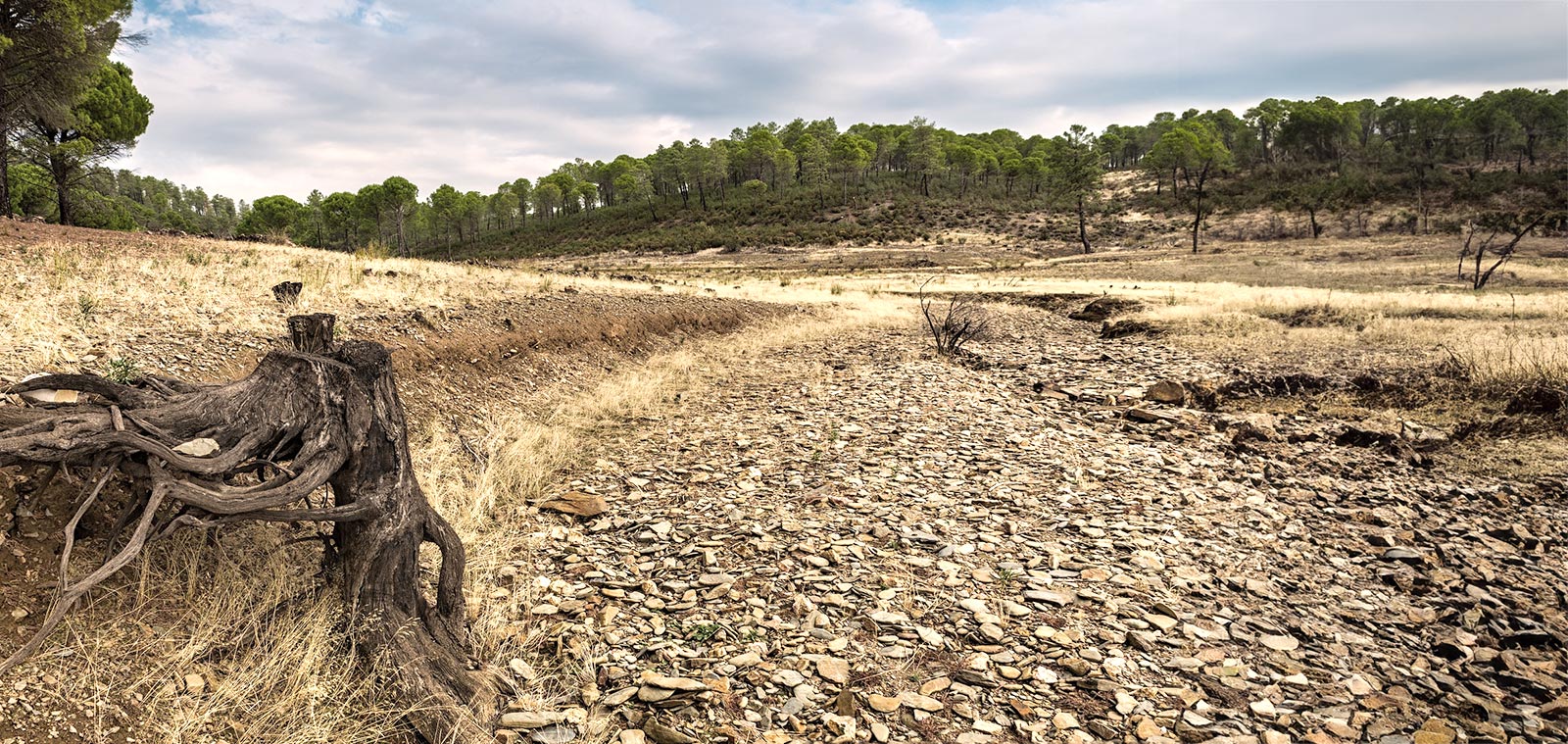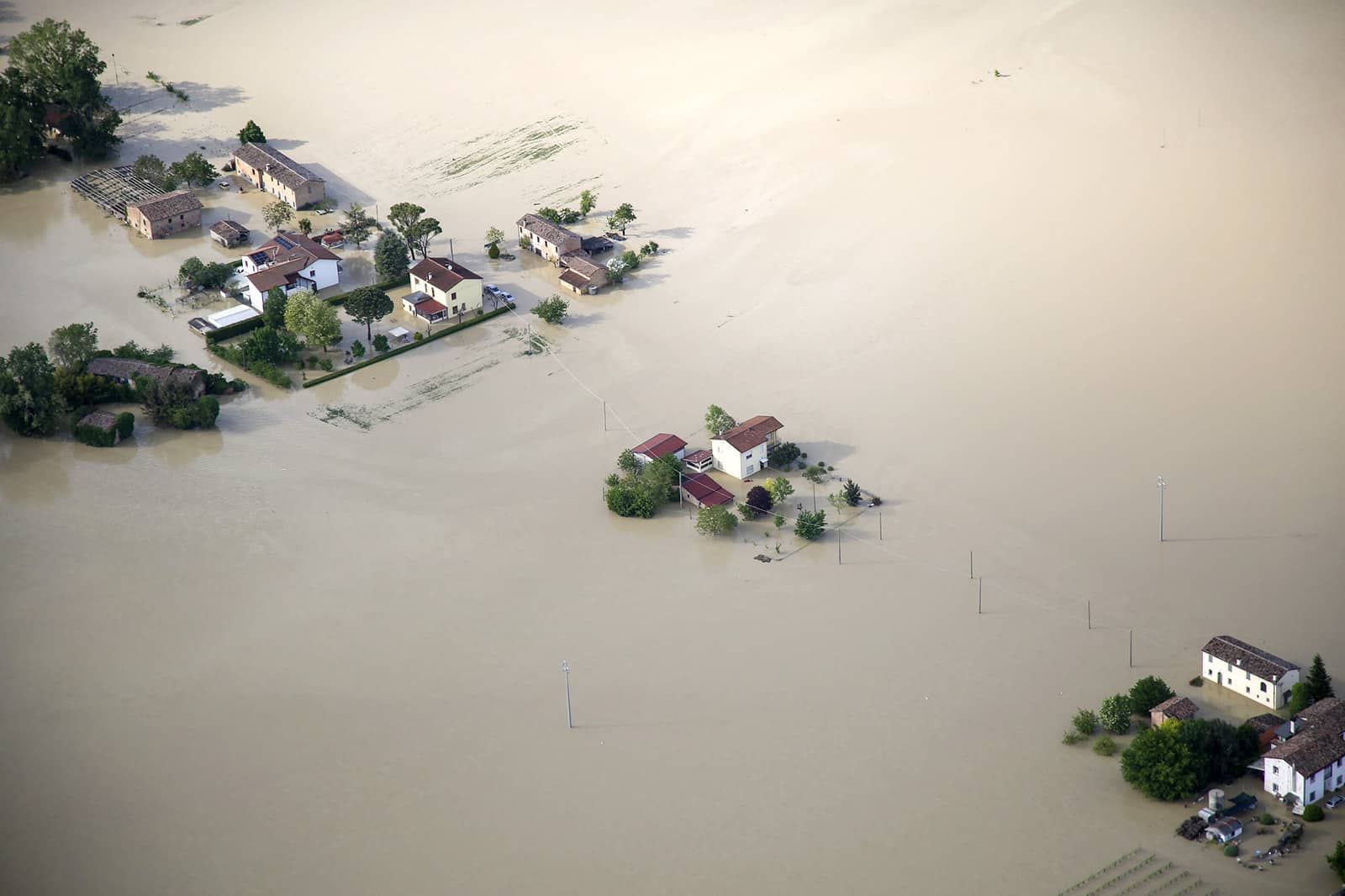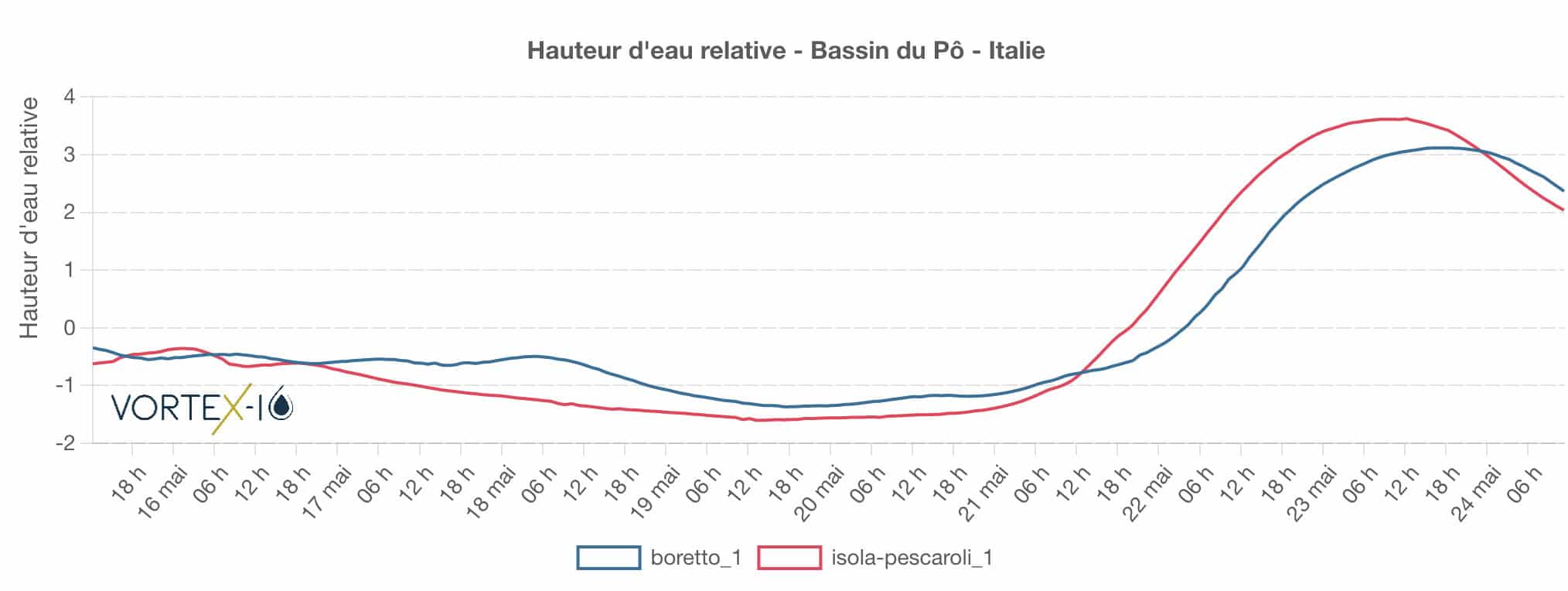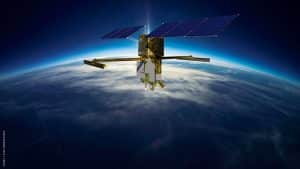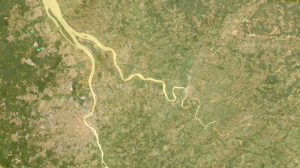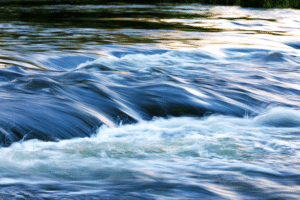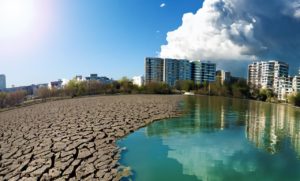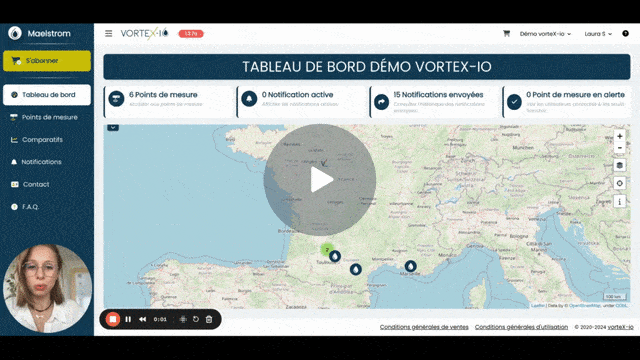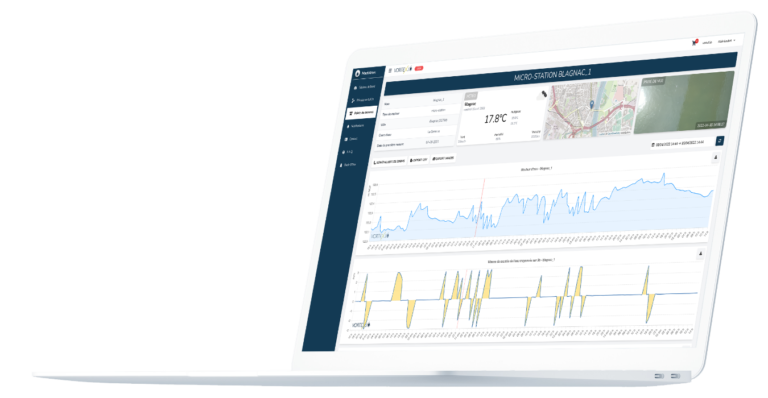Over the past 40 years, Europe has faced a worrying increase in extreme meteorological and hydrological phenomena such as storms, floods, and severe droughts. Recently, these events have taken on alarming proportions in most European countries, endangering communities, infrastructure, and the environment.
While these two types of extreme hydrological phenomena can cause immense damage, they appear to be at opposite ends of the spectrum. Although they appear to be completely different, there are links between periods of drought and episodes of flooding, which under certain conditions can amplify each other. That’s why it’s important to consider hydrological cycles as a whole.
Devastating floods
Flooding is becoming more frequent throughout Europe, with increasingly disastrous consequences. Heavy rains and sudden floods result in river and coastal flooding, often causing human casualties, massive population displacement, and significant material damages. Climate change, with its impact on precipitation patterns, is one of the major factors contributing to this intensification.
However, it should also be pointed out that rapid urbanization and the modification of watersheds considerably increase the risk of flooding. Indeed, under the pressure of land and real estate development, the construction of buildings and infrastructure is often allowed in areas that are prone to flooding. There is also an observed alteration of the land due to human activities such as agriculture and deforestation, which contribute to an increase in vulnerability to floods. Furthermore, the expansion of urban areas and the creation of impermeable surfaces reduce the soil’s capacity to absorb water, thereby increasing the risk of flooding during heavy precipitation events.
Prolonged droughts
Over the past year, we have witnessed a cruel intensification of droughts in many European regions, which has sometimes led to water restrictions, reduced crop yields due to lack of irrigation, sanitation and drinking water supply problems, and even concerns about the cooling of certain nuclear power plants.
Under the growing influence of climate change, scorching summers and unusually dry winters play a key role in this intensification.
Insufficient precipitation, combined with the overexploitation of water resources, deplete underground reserves of the water table and heavily impact the flow of rivers. It is also observed that drought and increasing temperatures significantly worsen the extent of forest fires worldwide, thereby exacerbating soil erosion and reducing their capacity to absorb precipitation.
Droughts and floods: two sides of the same coin
The existing links between these two extreme hydrological phenomena demonstrate a paradoxical relationship that requires in-depth study to develop effective measures for prevention and resilience in the face of environmental risks.
How drought periods can cause floods
Contrary to what logic might intuitively lead us to think, severe drought periods can significantly contribute to causing this type of flooding. During a drought period, the dry and hard soil loses much of its capacity to absorb water when it rains again. In this case, non-infiltrated water accumulates on the surface or flows downhill, causing extremely sudden and often devastating floods.
These are known as runoff floods, also called surface floods or rain floods.
Understanding how drought periods can contribute to causing floods is crucial in order to take preventive measures to minimize risks and potential impacts.
How floods can worsen drought periods
Although lack of precipitation is always at the root of drought, flooding can play a part in worsening it. Indeed, during a flood, when the power of the water unleashes on rich and deep soils, it can carry away sediments and nutrients that are essential for plant growth. The impoverishment of soils affected by this phenomenon can make future plant growth more difficult. In some cases, this can locally contribute to the deforestation of impacted areas, thus exacerbating the harmful effects of new drought periods.
According to the NGO Global Forest Watch (GFW), ” all major watersheds on the planet have lost 22% of their forest cover in just the past 14 years“.
Moreover, floods can also disrupt ecosystems by altering water quality, nutrient quantity, and the composition of plant and animal communities. Flood episodes can lead to increased water turbidity, which can affect the photosynthesis of algae and aquatic plants. Additionally, nutrients and sediments carried by floods can deposit in lakes and rivers, altering water chemistry and affecting the habitat quality of aquatic organisms.
These changes can contribute to the proliferation of algae and aquatic plants, leading to decreased oxygen in the water and the death of part of the established fauna and flora. Once again, these disruptions in wetland habitats can contribute to weakening their resilience during future drought periods.
In most situations, floods are not directly responsible for droughts, but they can have impacts on water balance and soil fertility if appropriate management measures are not implemented.
The role of jet streams
Another element to consider in explaining extreme hydrological and meteorological phenomena lies in the disturbance of jet streams. These high-altitude atmospheric currents, located between 4.5 and 10 miles above the ground, are conditioned by both the rotation of the Earth and the temperature differences between the poles and the equator. Over the past decades, these temperature differentials have decreased, leading to a rise in average temperatures on land and sea, as well as a rapid decrease in ice at the North Pole. This phenomenon results in slowing down the air masses of the jet streams and intensifying the north-south undulations of these massive currents.
These changes translate into the strengthening of climatic events and a slowdown in their movement. Episodes of precipitation, heatwaves, and heatwaves become more intense and last longer in the areas they affect.
This is one concrete explanation for the radicalization of the climate, not only in Europe but also globally.
Jet streams: atmospheric currents over Europe © CARBON BRIEF, NASA
The situation in Europe
May 2023: Italy hit by floods in Emilia-Romagna
From May 16th to 18th, 2023, the region of Emilia-Romagna in northeastern Italy witnessed a series of deadly floods. They were caused by unprecedented torrential rains that fell in just a few days. These exceptional precipitations caused rivers to overflow, inundating 23 municipalities in the region, including Modena, Bologna, and Ferrara, and triggering over 300 landslides.
The Italian Civil Protection Agency indicated that the floods affected 14 rivers simultaneously, hence the magnitude of the disaster.
The human toll from the floods is 14 deaths and 36,000 displaced.
The floods also caused extensive damage to infrastructure, including roads, bridges and power lines. Numerous homes, shops and businesses were also damaged or destroyed, and a significant proportion of the crops were wiped out. The floods have had a major impact on the region, and authorities and experts alike agree that it will take many years for the Emilia-Romagna region to recover from this.
As a reminder, Emilia-Romagna had already suffered heavy rainfall just two weeks earlier, with flooding and landslides claiming two lives.
Regarding vorteX-io, although our network of in-situ hydrological micro-stations does not yet have measuring points in the Emilia-Romagna region, our sensors located on the Po River, at a distance of approximately 150 to 200 km from the center of the floods, allow us to get an idea of the intensity of the floods that occurred between May 16th and 18th, 2023, in Emilia-Romagna.
Indeed, on this graph, available on our hydrological platform Maelstrom®, we can observe a radical increase in the water level of the Po River of nearly 13 feet in just 36 hours, approximately one week after the torrential rains in the Emilia-Romagna region. The flood wave took several days to reach the two vorteX-io micro-stations located several tens of miles away from the devastated areas. It is important to note that the Po River is the longest and largest river in Italy, and at the measurement points, its width is approximately 650 feet. A 13-feet rise in its level within such a short period of time speaks volumes about the intensity of the flood episode from May 16th to 18th, 2023.
Balkans: Bosnia-Herzegovina and Croatia also affected
May 2023 was a month of great dangers in the western part of the Balkans as well. Just like in Italy, Bosnia and Herzegovina, Croatia, and Serbia were severely affected by heavy rainfall that triggered serious flooding. The rains, originating from a depression centered over the northern Adriatic, caused several rivers to overflow, leading to road closures, landslides, and the evacuation of populations in several areas of Croatia, where the military was mobilized for assistance.
Croatia regularly suffers devastating floods that cause extensive damage and human losses, such as those that occurred in 2014. In its commitment to improving flood monitoring in Europe, vorteX-io will deploy 500 of its hydrological micro-stations in Croatia over the next two years. This operational deployment will take place as part of the WHYLD project, which is subsidized by the European Innovation Council (EIC) and will double the number of existing measurement points in the country. The collaboration between Croatian authorities and vorteX-io in collecting and analyzing large-scale, real-time in situ data will contribute to better understanding and anticipation of such phenomena.
April-May 2023: Period of Historic Drought in Southern France, Spain, and Portugal
Meanwhile, on a continental scale, Europe is facing a prolonged and concerning drought episode for this time of year in several regions.
The situation is historically severe in Spain and southern Portugal, where heat records (and consequently drought records) were broken in late April 2023, with average temperatures exceeding +6°C and locally reaching up to +12°C across the Iberian Peninsula.
The northwest of the Maghreb is also affected by this situation, experiencing equally exceptional anomalies due to an air mass coming from the Sahara.
Such air mass temperatures are similar to those encountered during summer heatwaves and had never been observed in April in Spain before, with peaks approaching 40°C during the period from April 24th to 30th, 2023.
As seen on the maps and reports released by the European Drought Observatory (EDO), these thermal and hydrological anomalies are also severely impacting southern France, particularly the Pyrénées-Orientales area.
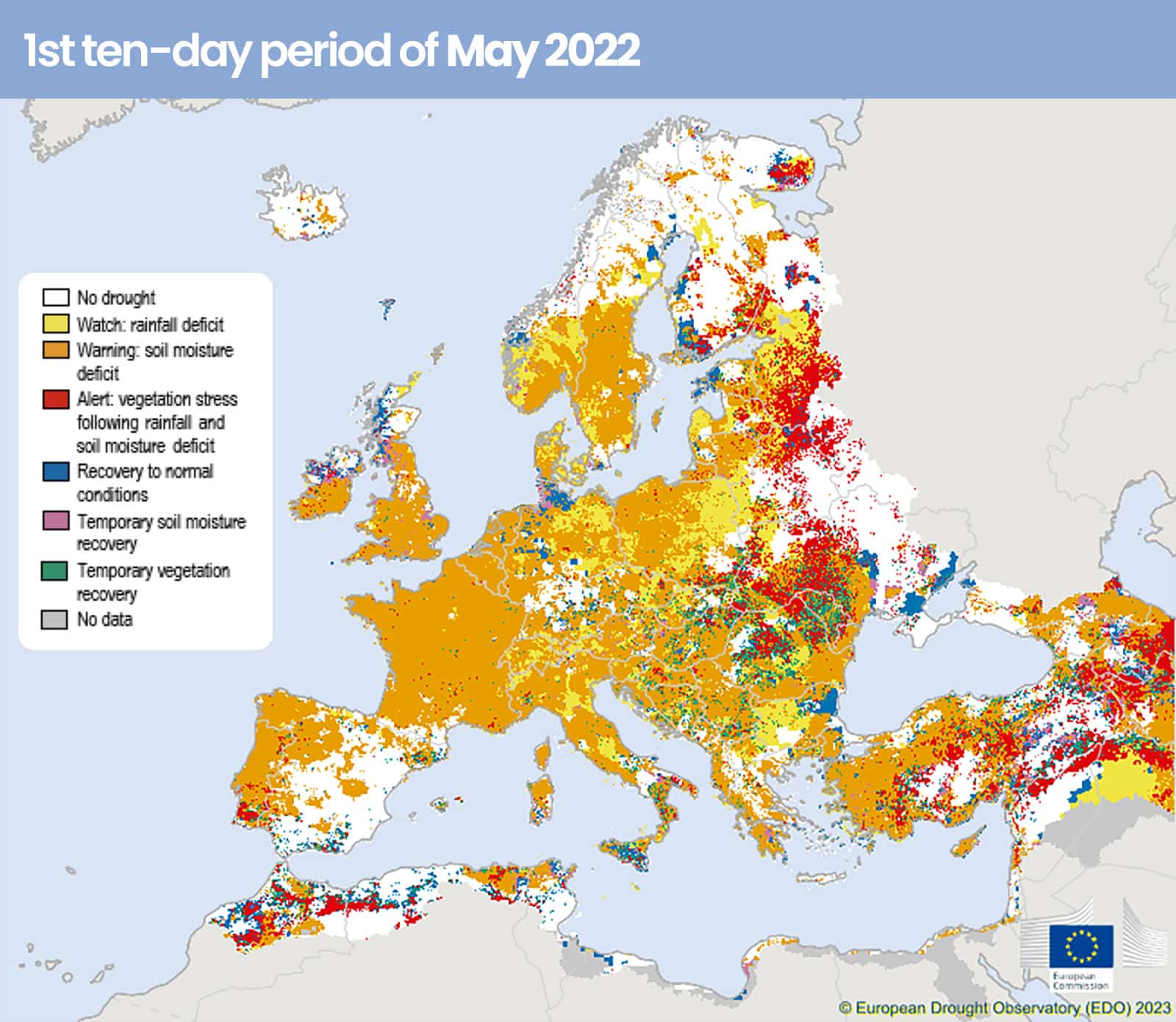
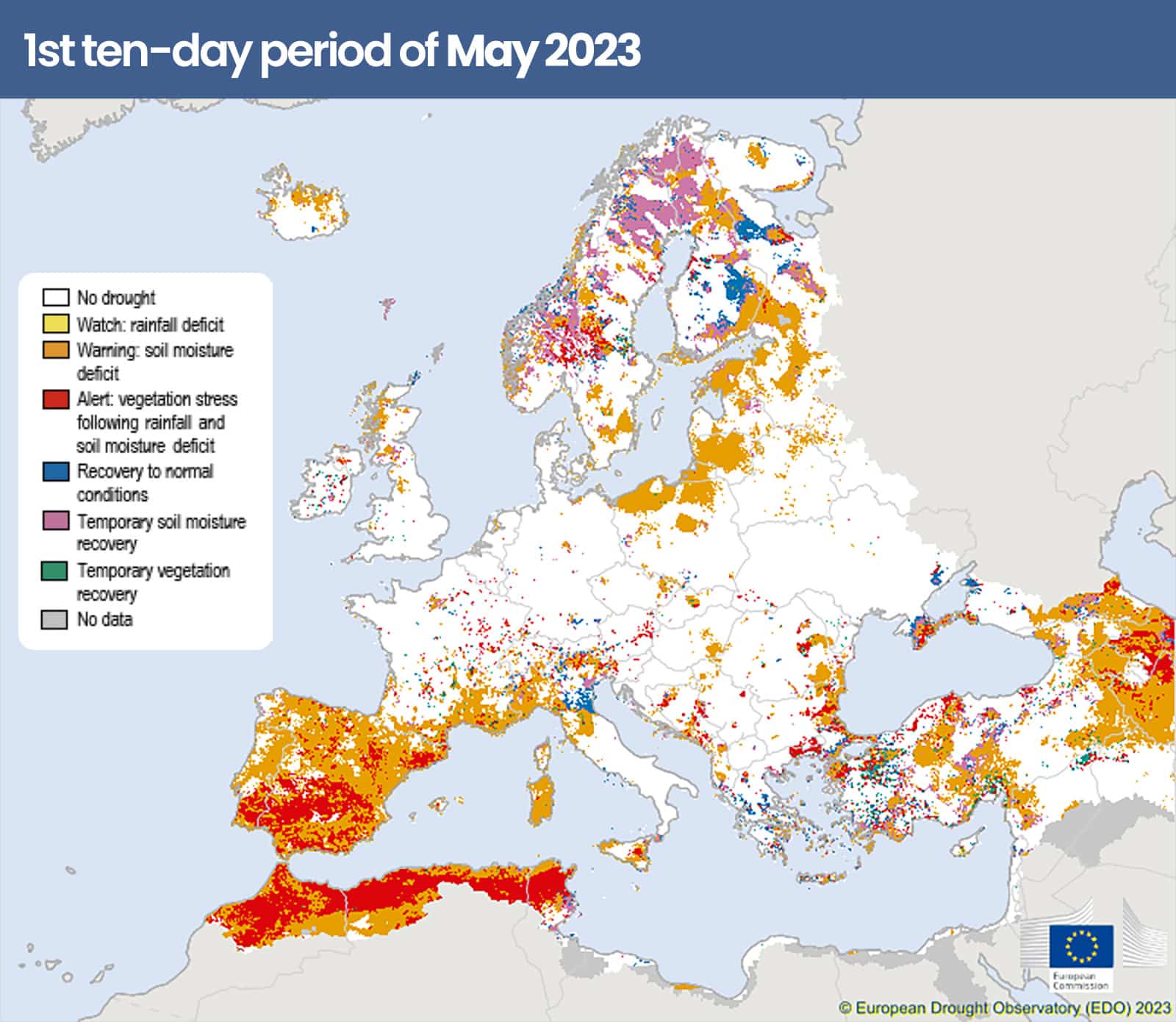
(Move the vertical slider to compare the state of drought in 2022 and 2023 during the first 10 days of May)
At the end of April, the Prefect of Pyrénées-Orientales was compelled to convene a “water resource” crisis committee consisting of local authorities, users, experts, associations, and government services. This committee was able to “confirm, based on objective and shared data, a historically severe drought situation unprecedented since the beginning of meteorological records (1959) and, probably, even further back.”
Consequently, the Prefecture of Pyrénées-Orientales issued an order declaring a “drought crisis” for the catchment basins and aquifers of Agly and Têt, as well as the Aspres and coastal border aquifers, from May 10th to June 13th.
Last February, the SMBVA (Mixed Union of the Agly Catchment Basin) requested vorteX-io to install three of our micro-stations above the Agly River. Thanks to the Maelstrom® platform, the SMBVA team can now monitor the river in real-time and receive alerts in case the customized thresholds they have set are exceeded.
In contrast to the measurements taken in the Po River basin during the same period, from May 15th to 24th, 2023, the results are clear: water is absent, and the river is completely dried up.
This fact is confirmed by water level measurements as well as real-time images captured by vorteX-io micro-stations.
Conclusion
In recent decades, the frequency and intensity of climate-related events such as floods and droughts have increased in Europe. The interplay between these water-related natural disasters is the result of a complex interaction, with these phenomena influencing each other.
Human activities heavily contribute to climate change, which is a key factor in this vicious cycle of alternating floods and droughts. Greenhouse gas emissions, population growth, urbanization, and changes in land use practices all contribute to this detrimental dynamic by profoundly altering the environment and its natural cycles.
Implementing measures to minimize the number of floods and reduce their impact on populations, property, economic activities, and the environment is of crucial importance. This requires integrated watershed management, with a focus on soil conservation, wetland preservation, and sustainable water resource management.
Additionally, improving infrastructure by investing in flood protection systems such as levees, dams, and drainage systems is necessary. Adequate land use planning is also paramount, avoiding construction in high-risk flood areas and promoting sustainable agricultural practices. Deploying real-time and large-scale early warning systems helps quickly detect flood risks and provide warnings to populations. This is the goal of the WHYLD project led by vorteX-io and supported by the European Commission.
It’s worth mentioning that the scientific community places great hope in the French-American space mission SWOT, which aims to understand the global water cycle.
Raising awareness and educating individuals about safety measures are also essential in strengthening preparedness and resilience against water-related natural hazards.
Lastly, to address these significant challenges and secure a more resilient future, strong international cooperation at the European level is absolutely crucial. Sharing knowledge, best practices, hydrological data, and resources will enable Europe to effectively prevent and manage the alternation of floods and droughts, which do not recognize borders.
The vorteX-io Newsletter
Get the latest news from vorteX-io:
projects & innovations, updates of the Maelstrom® platform, in-depth articles about hydrology...
